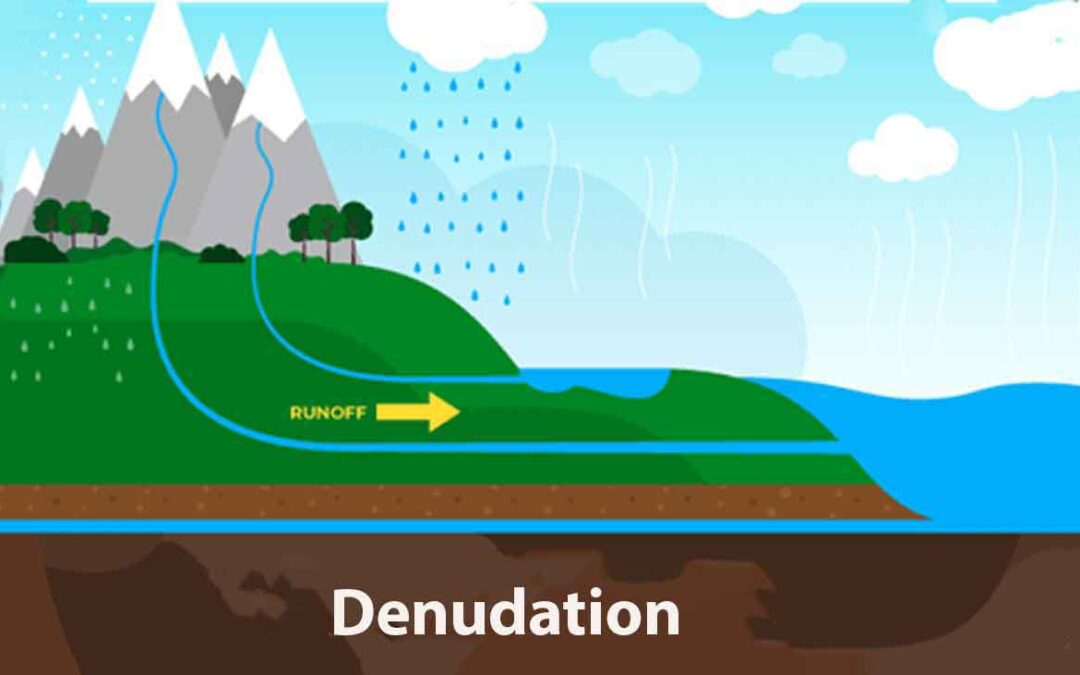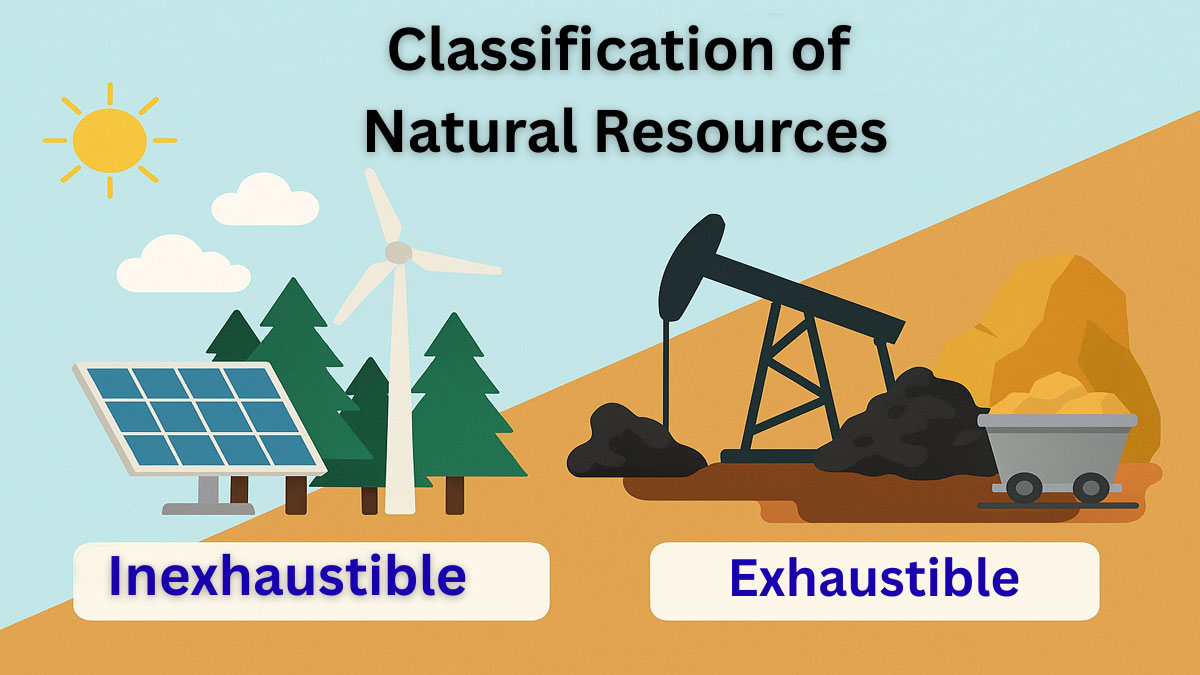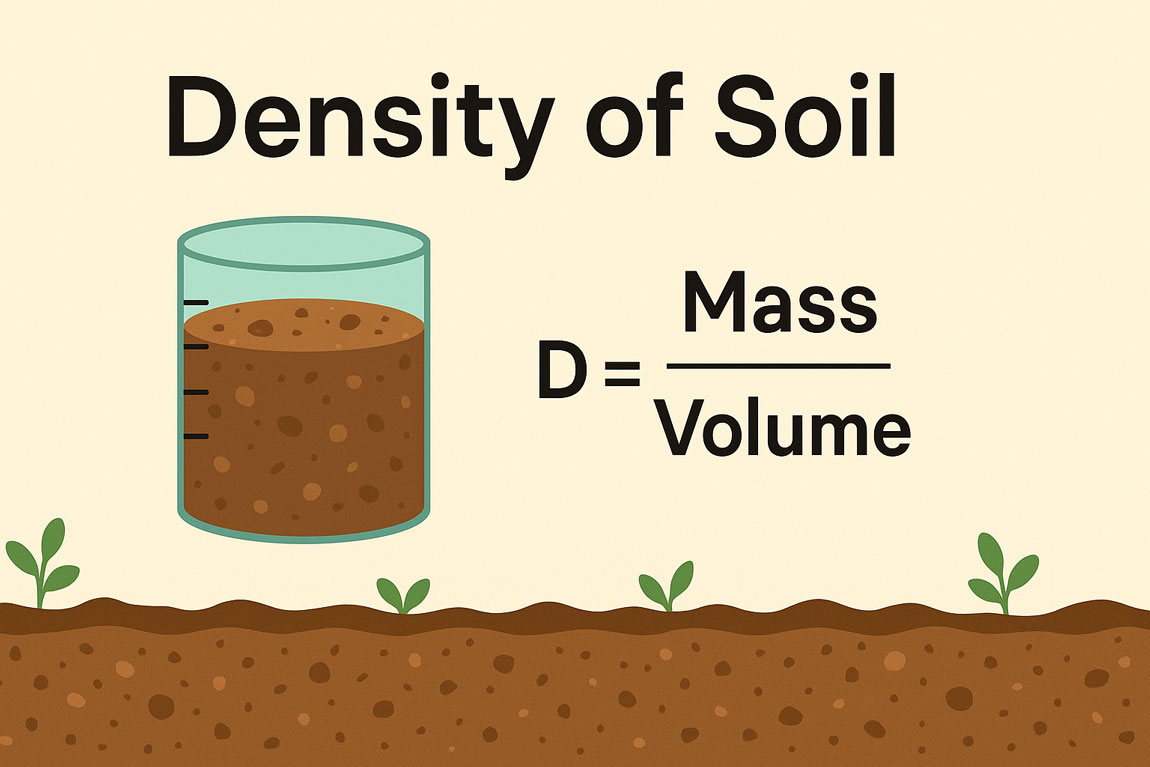Definition:
Denudation is the long-term sum of processes that cause the wearing away of the earth’s surface, reducing the elevation and relief of landforms and landscapes.
Process of Denudation:
Weathering :

Weathering represents the preliminary phase of denudation, during which rocks are fragmented into smaller particles. It occurs in three primary forms:
Mechanical weathering: Physical forces such as freeze-thaw cycles, root growth, and temperature changes cause rocks to crack and break apart.
Chemical weathering: Chemical reactions, like oxidation or the action of acids, alter the minerals in rocks, making them more susceptible to breakdown.
Biological weathering: Organisms such as plants, lichens, and animals contribute to the breakdown of rocks through physical contact and the secretion of chemicals.
Erosion:

Erosion refers to the process through which natural forces transport weathered materials:
Water erosion: Rivers and rainfall erode the landscape, carving out valleys and transporting sediments.
Wind erosion: In dry environments, wind carries away small particles, shaping desert landscapes.
Glacial erosion: Glacial erosion occurs when glaciers, through their ice movement, wear down and polish rock surfaces.
Gravity: Gravity pull causes landslides and rockfalls, resulting in the movement of large masses of earth and rock.
Mass Wasting :

Glacial erosion occurs when glaciers, utilizing their ice movement, wear down and polish rock surfaces.
There are two types of mass wasting.
Slow mass wasting: When rock starts to break down, it is called soil; if rock starts to flow without breaking down or weathering, it is called rock creep.
Rapid mass wasting: Landslides, rockfalls, sheet erosion, mudflows, and earth flows.
Characteristics of Weathering in Denudation and Weathering:
- The disintegration of rock is referred to as weathering.
- The collapse process refers to the breakdown of rocks.
- Rock fragments are not removed during the collapse process.
- Weathering serves as an effective mechanism for the formation of soil.
- Weathering depends upon climate conditions.
- Mechanical weathering is prevalent in arid climates.
- Rock disintegrates into smaller stones, which gradually evolve into pebbles. These pebbles Eventually break down into fine particles that are then moved from one location to another. The characteristics of the rock, including its texture, composition, and hardness, play a crucial role in determining the types of weathering processes that may occur.
Difference Between Weathering and denudation:
| Weathering | Denudation |
| Weathering involves the breakdown of rocks without actually removing them. | Denudation involves breaking down and removing rocks from the Earth’s surface. |
| It is only a part of the denudation cycle. | It includes weathering, erosion, mass movement, and transportation. |
| Weathering is a short-term process. | Denudation is a long-term process. |
| The main agents of weathering are temperature, moisture, frost action, wind, oxygen, and organic acids. | The four active agents of denudation are water, wind, waves, and glacial ice. |
Factors Affecting of Denudation:
- Climate: Climatic conditions play an important role in erosion. In areas with warm and humid climates, chemical weathering occurs at an accelerated rate, while cold climates promote physical weathering, primarily through freeze-thaw. Additionally, wind strength and precipitation also affect variability in erosion rates.
- Lithology: Rock type determines resistance to weathering. Softer rocks like limestone erode faster than harder rocks like granite, leading to varied landscapes depending on lithological composition.
- Relief: Steeper slopes promote faster erosion due to gravity, while flatter terrains experience slower denudation. Slope angle also affects water runoff, intensifying erosion on steep hillsides.
- Tectonic Activity: Uplift from tectonic forces exposes rocks to surface processes, increasing weathering and erosion in tectonically active regions like mountain ranges.
- Biosphere (Fauna and Flora): Vegetation stabilizes soil, reducing erosion, while root systems contribute to chemical weathering. Animal activities can disturb soil and increase erosion rates.
- Anthropogenic Activity: Human actions like deforestation, construction, and mining accelerate denudation by removing vegetation and destabilizing slopes. Conservation efforts can help reduce human impact on erosion.
Conclusion :
Denudation is crucial to Earth’s geological evolution. By breaking down, transporting and redistributing material, it constantly shapes the landscape. This process reveals the planet’s history as it drives the formation of landforms. Understanding denudation helps us understand the natural forces that shaped Earth over time and continue influencing its future.






